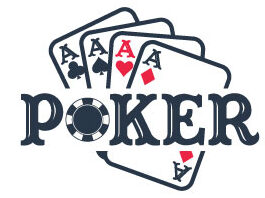Playing poker at home can be a fun and relaxing experience, but it’s important to know the rules of the game and how to stack the deck in your favour. In this article, we’ll outline the specific rules for poker chip values and stack distribution, and show you how to use them to your advantage when playing in a home game.
What are poker chip values and stack distribution?
There are a few ways to win at poker. One is to have the best hand, which means having the highest card value and matching any other cards in the players’ hands. Another is to make better cards than the other players, which means having a higher card rank (aka being higher in value). And finally, you can make more money by playing poker with less money. This is done by playing with a smaller stack, or by making more hands per hour than your opponents.
What are poker chip values? Poker chips are measured in fractions of a dollar and are usually divided into five denominations: one-hundredth of a dollar ($0.01), one-tenth of a dollar ($0.10), one-fifth of a dollar ($0.25), one-quarter of a dollar ($0.50), and one-third of a dollar ($1). The higher denominations are worth more money than the lower denominations. For example, an ace is worth two points, a two is worth three points, and so on up to ten points for a king (which is worth eleven points).
Stack distribution for home games is different from that for tournaments because there are usually more players
What are the different types of poker games?
There are many different types of poker games, each with its own rules and betting possibilities. Most popular among these is the Texas Hold’em game, which is played with a standard 52-card deck. Other common types of poker include Omaha and Five-Card Draw, both of which use a standard 52-card deck with jokers. Razz, HORSE and Seven-Card Stud also use a standard deck, while Omaha Hi/Low uses an unusual layout of four jokers and a regular deck. In addition to the traditional poker games, there are variations such as Crazy Eights and Deuce to Seven, which are played with an odd number of cards.
All poker games involve building a stack of chips (or money) by either winning or losing hands. The size of the stack varies from game to game – in Texas Hold’em, for example, the player must have at least two pairs (two cards of the same rank) before any other kind of hand can be played. In other games, such as Omaha Hi/Lo or Seven Card Stud, players may only need one pair to start playing.
When two or more players are involved in a hand, each player tries to build the
How to calculate stack sizes for each game?
When playing poker at home, you will want to know how to calculate stack sizes for each game. Poker chip values and stack distribution vary depending on the format of the game. In some cases, a player may only need two or three chips to start a hand. Other hands may require as many as 20 or 30 chips. It is important to know the value of each poker chip so that you can correctly calculate your stack size.
When playing Texas Hold’em, Omaha, and Draw poker, players are dealt five cards face down and then one more card is turned over to begin the round of betting. After the first round of betting is complete, the player with the lowest hand (or no hand if there is a tie) receives three cards plus the initial bet back from the deck. The remaining players receive two cards each. In all remaining games, including Pot-Limit Omaha and No-Limit Texas Hold’em, after one player has finished their turn (either by dropping out or being forced out), four new cards are dealt to each player and play resumes with a new round of betting.
In Seven Card Stud, Five Card Draw, and Lowball, each player starts with one card instead of five.
Tips for playing poker at home.
If you’re new to poker, or just looking to up your game at home, there are a few things you need to know. Here are some tips for playing poker at home:
– Stick to basic hands. Don’t try to make too many complicated plays. If you’re not sure what cards your opponent is holding, stick with basics like two pair, straight, and flush.
– Pay close attention to the stack size. Make sure you know how much money your opponents have left in their stacks. This will help you make better decisions about when and how to raise.
-Don’t overreact. It’s important not to get too wild with your bets or hands. Stick to a plan and stick with it. If you do that, you’ll be able to win more games at home than you might think!






More Stories
Round of 32 match versus Monteiro (+190). Tennis odds courtesy of Tipico Sportsbook
Kentucky Derby Day Countdown Begins, 20 Horses Down to Party
Miami Heat’s Jimmy Butler Injury Will He Play In Game 4?